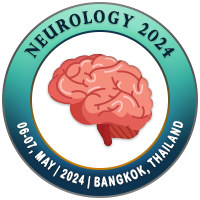
Tatyana A. Kudryashova
GBUZ "Research Institute of SP named after N.V. Sklifosovsky DZM", Russian FederationTitle: Results of treatment of patients with symptomatic occlusion of the internal carotid artery in the long-term period after the formation of extra-intracranial microsurgical anastomosis
Abstract
Introduction: According to the World Health Organization (WHO), acute cerebral circulatory disorder by ischemic type (ONMC) ranks third due to the mortality rate of the population, second only to cardiovascular and oncological diseases. According to 2017 data, the frequency of ischemic stroke is up to 500 cases per 100 thousand people per year.
To date, one of the surgical methods for the prevention of recurrent cerebral circulatory disorders in patients with symptomatic occlusion of ICA is the operation formation of an extra–intracranial microsurgical anastomosis (EICMA).
The purpose of the study: To evaluate the effectiveness of extra-intracranial microsurgical anastomosis in patients with symptomatic occlusion of the internal carotid artery to prevent recurrent ischemic cerebral circulation disorders and improve neurological status in the long-term period of the disease.
Material and methods: In the period from 2016 to 2019, 54 (100%) patients were hospitalized and examined in the Department of Neurosurgery of the N.V. Sklifosovsky Research Institute of Emergency Medicine, who underwent the formation of EICMA on the side of symptomatic occlusion of the internal carotid artery. Symptomatic occlusion of ICA was more common in men – in relation to 5:1. The age of patients ranged from 41 to 78 years, the average age was 62 years. The main research methods in the long-term period after brain revascularization were: assessment of the dynamics of neurological status (according to the stroke scales of the National Institutes of Health (NIHSS), modified Rankin scale and the Rivermead mobility Index), CT angiography of extra-intracranial arteries, ultrasound microsurgical anastomosis, in which linear and volumetric blood flow and brain SPECT were evaluated. All results were compared with preoperative, early postoperative and long-term indicators. The work also analyzed intraoperative parameters such as the time of the operation, the type and size of skull trepanation, flowmetry indicators.
Results: The average operation time was 212 minutes. Resection trepanation of the skull was performed in 67% of patients. Flowmetry was performed in 94% of patients, its parameters ranged from 3 to 95 ml/min. According to CT angiography in the long-term postoperative period after the application of EICMA, it was found that the anastomosis functioned in 53 (98%) patients. According to ultrasound data, there was a decrease in LSC in the long–term postoperative period – median 48.5 [30, 75] cm/s, but at the same time there was an increase in OK indicators - median 75 [70, 80] ml/min in comparison with early postoperative indicators. According to the results of brain SPECT in the long-term postoperative period, a positive dynamics of rMK indicators was revealed - the median rMK is 35 [32, 36] ml/min/100g compared with preoperative indicators. In the long-term period after brain revascularization, according to the results obtained, improvements in the dynamics of neurological status were noted: according to the stroke scale of the National Institute of Health: in 59% of patients, according to the Rivermead mobility index in 63.3% of patients and according to the modified Rankin scale in 48% of patients. It is important to note that repeated ONMC of the ischemic type and TIA in patients with functioning microsurgical anastomosis in the long-term period of the disease were not observed.
Biography
To be updated

